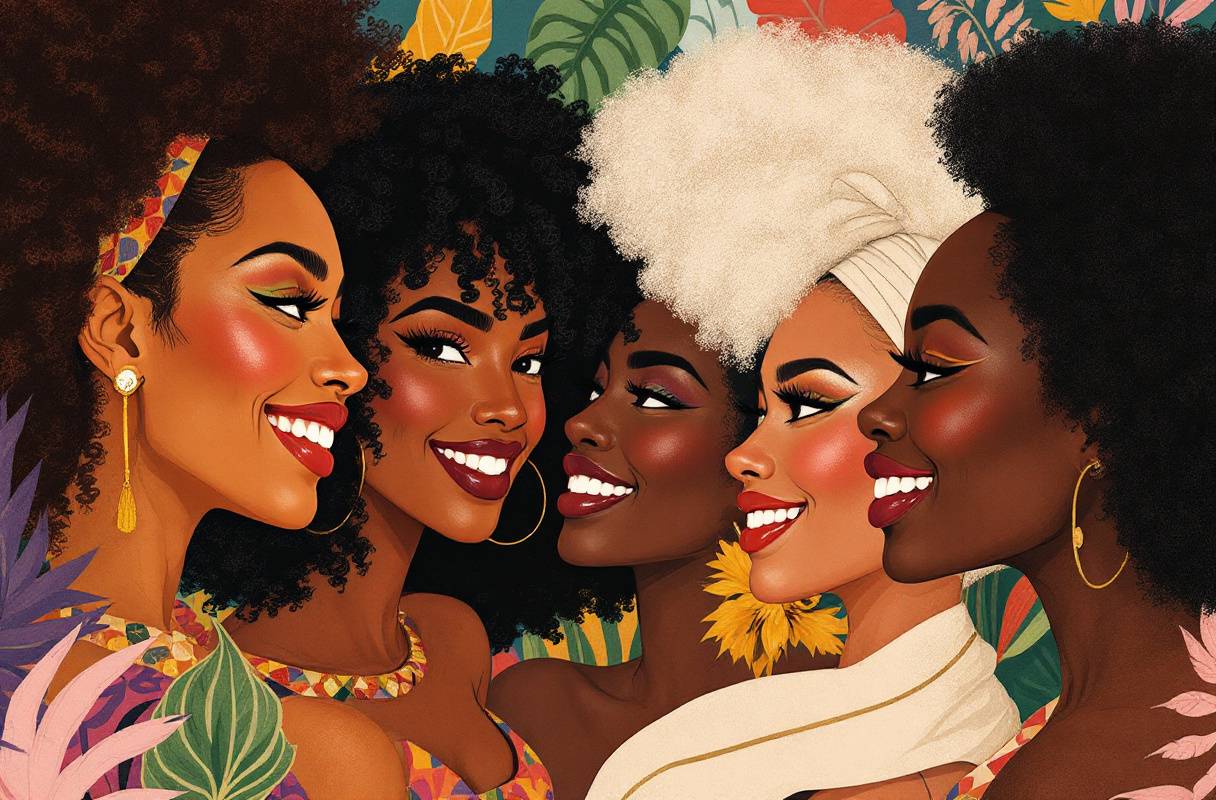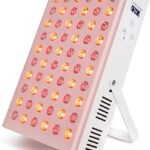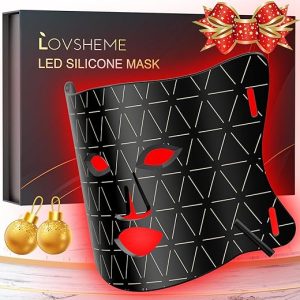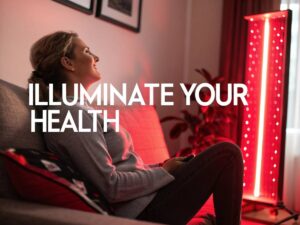In a world where beauty standards often echo a narrow, Eurocentric ideal, the vibrant and diverse expressions of Black beauty stand as powerful statements of identity and resilience.
“Breaking the Mold: Rethinking Black Beauty Standards” delves deep into the evolution, challenges, and triumphs of Black beauty, celebrating the rich cultural heritage and modern innovations that redefine what it means to be beautiful.
From historical influences to contemporary movements, this article illuminates the journey of Black women reclaiming and celebrating their unique beauty on their own terms.
Evolution of Black Beauty Standards
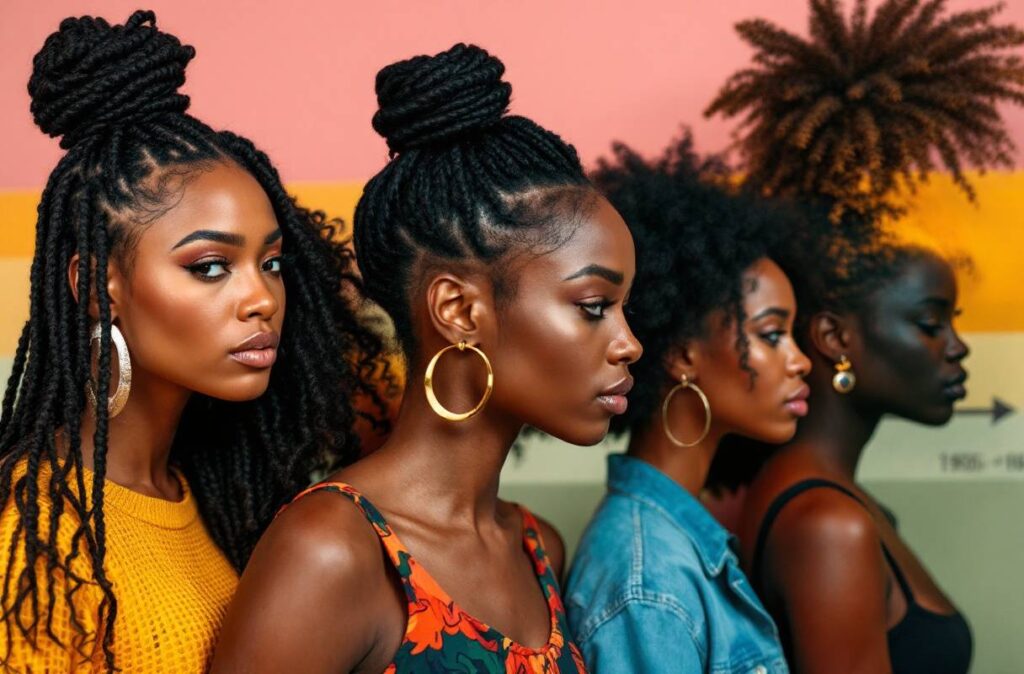
Beauty norms in the Black community have switched it up a lot over time, molded by a mix of history and what’s popping right now. Grasping this mix-up helps us celebrate the unique and vibrant beauty of Black women today.
Historical Influences
Looking back, Black beauty standards got their roots in African culture and were tugged around by what was happening socially and politically in America. Before anyone thought about colonizing Africa, beauty was all about fabulous hairstyles, cool body art, and popping outfits. This was more than just style; it was an identity, showing off one’s place and purpose.
But all that swag got challenged when slavery and colonization hit the scene. European beauty ideals tried to steal the show, pushing Black women to mold themselves into a Euro-style look that wasn’t their own. The pressure was on to be lighter-skinned, have straighter hair, and delicate facial features, often messing with personal self-worth and causing what we call internalized racism.
But Black women didn’t back down easy. The 1960s and 1970s rang in a vibe with the Black is Beautiful movement, honoring natural hair, melanin magic, and African-inspired fashion. Legends like Nina Simone and Angela Davis became ambassadors of this movement, flipping off mainstream beauty norms and championing self-love and cultural pride.
Modern Trends and Influencers
Fast forward to today, and Black beauty is going through another remix, fueled by fresh faces and cultural waves. The Nineties had its swag with laid-back lipstick shades, bold brows, and celebs like Lauryn Hill, Halle Berry, Naomi Campbell, and Aaliyah bringing it to the mainstream. It was a shout-out to the natural and chic elegance of Black women.
Then 2017 shook the game when Rihanna introduced Fenty Beauty. Dropping 40 foundation shades, it wasn’t just about makeup—it was a movement. It woke up the entire beauty industry, pushing others to catch up and rep that diversity.
Nowadays, social media is the megaphone for Black beauty standards. Movements like #BlackGirlMagic are about shouting out the real beauty and achievements of Black women, smashing stereotypes. Instagram and YouTube have become hotspots for black beauty influencers who redefine what beauty means and push self-love in every post.
| Year | Key Influences | Notable Figures |
|---|---|---|
| 1960s-1970s | Black is Beautiful Movement | Nina Simone, Angela Davis |
| 1990s | Nineties Chic | Lauryn Hill, Halle Berry, Naomi Campbell, Aaliyah |
| 2017 | Fenty Beauty Launch | Rihanna |
Looking at these historical points and today’s trends gives us the chance to celebrate the backbone and innovation of Black women shaping their own beauty story. It’s a chapter still writing itself, inspiring and lifting up Black folks everywhere.
Systemic Challenges in Beauty Industry
The beauty biz ain’t always a pretty picture, especially when it comes to Black beauty standards. Folks are still wrestling with tons of problems, hitting Black people, especially women, right where it hurts. It’s a dance between unfair treatment and just not showing up for these voices, all wrapped up with racial gaps in resources.
Discrimination and Lack of Representation
Prejudice? Oh, it’s alive and kicking in beauty! There’s this big elephant in the room: the sneaky bias against natural hair. Google “professional hairstyles,” and you’ll get mostly pics of White women with poker-straight hair.
Now, switch gears to “unprofessional hairstyles,” and watch how Black women with braids, dreadlocks, and bantu knots get unfairly tagged. It’s a big, fat underline on how deep-rooted the unfairness runs in society and media.
Fighting back, laws like the Crown Act are paving the way. This act gives the boot to hair discrimination in schools and workspaces. As of 2022, a whopping eighteen states in the US have hopped on board, showing they mean business in tackling these stubborn roadblocks.
Meanwhile, peek into the beauty landscape, and there’s a glaring absence of Black faces and voices. Black women, despite driving trends and purchases left and right, are shut out from the big decisions. Narrow choices in foundation shades, haircare goodies for natural textures, and a thin presence in ads paint the picture of this lopsided story (Byrdie).
Check out this little chart that spills the beans on representation:
| Beauty Campaigns | Percentage of Black Women Featured |
|---|---|
| Major Beauty Brands | 10% |
| High-End Brands | 5% |
| Drugstore Brands | 7% |
The numbers speak volumes, don’t they? Thanks, Byrdie.
Racial Disparities in Access
When it comes to tracking down beauty stuff, Black women find themselves jogging an uphill race. The struggle to find foundation shades for darker skin tones or products that play nice with natural textures? It’s a big, fat symptom of a deeper unease in the industry. This shortfall doesn’t just mess with the shopping experience; it’s an echo of Black women being sidelined in beauty ideals.
Flipping through magazine ads or watching TV, and the cultural co-opting of Black beauty throws another punch. Rules and expectations in the workplace carry it forward, perpetuating a system that continues to weigh heavily on Black women.
Keen to dive into the vibrant impact of Black beauty influencers? Swing by our page on black beauty influencers. Looking for products that truly fit the bill for Black women? Peek into our sections on black beauty products and black beauty bloggers.
These hurdles highlight the roar for genuine reform in beauty, a sea-change that puts Black women in the spotlight where they belong.
Impact of Eurocentric Standards
Eurocentric ideals have seeped into the nooks and crannies of society, laying out what “beauty” looks like and nudging the beauty industry in a particular direction that’s often not in favor of Black beauty.
Shaping Beauty Norms
These standards have been running the show for quite a while in the glitzy world of Hollywood. It’s all about what features get the nod — light skin, skinny noses, and hair that’s a little on the loose, wavy side. If you’re anything else, well, suddenly it’s a struggle for the spotlight. This narrow beauty lens squeezes out those with darker skin, making big acting gigs feel out of reach.
But it’s not all lights, camera, action here —these standards seep into everyday life, too. Whiteness, or just being a tad closer to it, comes with perks. Lighter skin often equates to better job opportunities, higher paychecks, and an easier climb up the social ladder (NCBI). People call this “colorism,” a sort of racism that tips the scales in favor of lighter skin. It colors everything from friendships to the workplace, affecting perceptions of beauty, too (Lithub).
Influencing Product Development
It’s not just what’s on our screens; Eurocentric ideals also shape the beauty gear spilling off the shelves. For ages, beauty goods have pitched themselves towards European standards, overlooking the fantastic variety of shades, textures, and needs distinctive to Black women.
This oversight leaves Black women with too few options. The focus on those so-called “universal” traits means less choice for those whose beauty journey diverges from the European roadmap. But now, wave hello to Black-owned beauty brands. These brands are bridging gaps, delivering products that don’t just serve but honor and highlight the natural splendor of Black women.
| Aspect of Product | Old-School Norms | Impact on Black Beauty |
|---|---|---|
| Skin Shade Range | Stuck on Fair and Medium | Leaving Out Darker Shades |
| Hair Texture | Straight or Slightly Wavy | Few Choices for Coily, Kinky Hair |
| Facial Features | Slim, Euro-Inspired | Overlooking Fuller Features |
The Crown Act lights a fire under this issue, tackling bias against natural hair in offices everywhere. By 2022, at least eighteen states in the US had put the Crown Act into motion, standing against silly rules that discriminate based on hair texture and styles.
Cheering for real diversity and inclusion in beauty matters more than anything. Movements like #BlackGirlMagic champion real representation, paving the way for dismantling these old eye-rollers, welcoming beauty standards where Black is not just included but celebrated.
Empowerment Movements in Beauty
Empowerment movements are helping make big changes in the way we look at black beauty standards, throwing a wrench in what society says is “normal.” Two big players here are the #BlackGirlMagic movement and the fight for more diversity and representation across the beauty industry.
#BlackGirlMagic Movement
The #BlackGirlMagic movement kicked off as a bold answer to ugly stereotypes that weighed down Black women for way too long. Cashawn Thompson fired it up with a Tweet after some Psychology Today article (thankfully taken down) tried to claim Black women weren’t as attractive as others. This campaign took off, celebrating Black women’s beauty and achievements, giving their confidence a nice boost. We’re talking about social media fireworks!
Key Numbers:
- 82% say the movement made them feel better about themselves.
- 69% report higher self-esteem after using the hashtag.
This movement struck a chord with Black women everywhere, giving them a stage to flaunt their beauty and talent. Loads of Black women are now rocking their natural looks, be it their hair or skin tone, once deemed “undesirable” by the mainstream. Take a look at our piece on black beauty influencers for more on this magic.
Advocacy for Diversity and Inclusivity
Beyond hashtags, the push for diversity and inclusivity in beauty is picking up steam. Companies are making big moves to change how they work and the stuff they sell, reflecting a whole spectrum of beauty. Sleek, a British brand born in the ’80s, is a shining example of getting it right, crafting products for all skin tones. Black women in the UK dig it since they often have a tough time finding the right shades.
Despite progress, hurdles still exist. Many Black women face discrimination and a lack of representation in beauty products and campaigns. Check out these tough stats:
| Feature | Percentage of Black Women |
|---|---|
| Hair Texture | 78% |
| Skin Complexion | 64% |
| Facial Features | 60% |
These numbers show there’s more work to be done. Brands and influencers have the power to challenge these old-school ideas by celebrating natural Black beauty and tossing aside outdated, Eurocentric ideals. Changing silly policies that frown upon natural hairstyles like braids and dreadlocks in schools and offices is crucial.
By championing diversity and inclusion, the beauty world can do a better job of representing Black women and pave the way to a more understanding and accepting society. For more on trending vibes, check our articles on black beauty products and black beauty bloggers.
Black Hair Culture
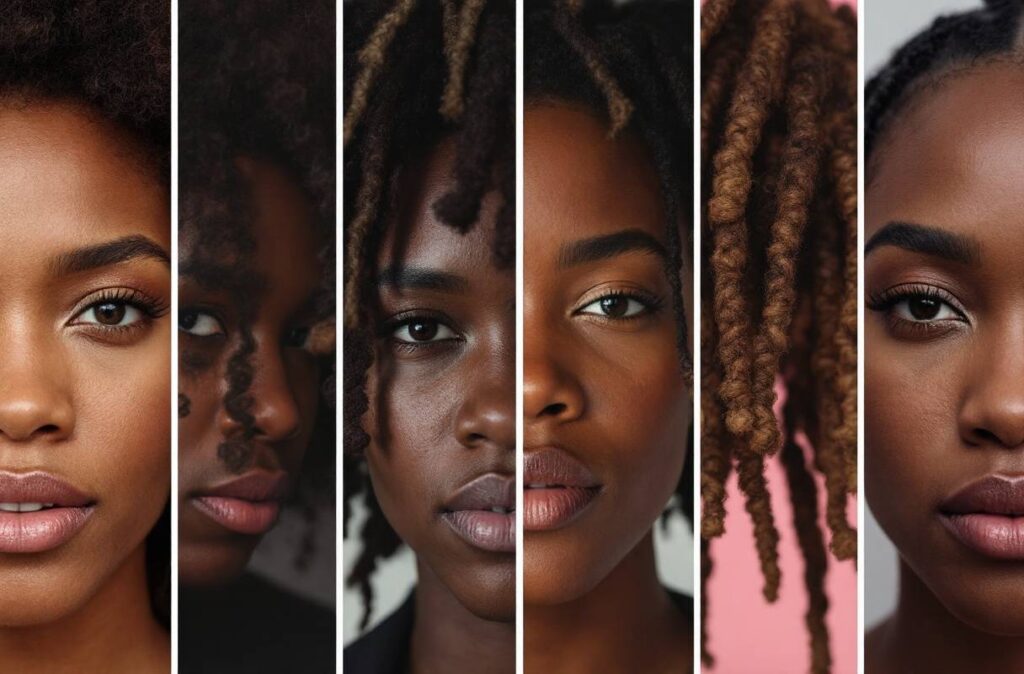
Black hair ain’t just a style—it’s a statement, a symbol, and sometimes a struggle. Let’s shed these layers and dive into the vibrant world of Black hair culture. We’ll celebrate its curly, coily splendor and the big moves being made to help everyone else catch up.
Natural Hair Movement
The Natural Hair Movement is all about celebrating afro-texture in all its glory. This initiative gives a big ol’ nod to those luscious kinks, coils, and curls that don’t fit into the rigid confines of “beauty” as defined by Eurocentric standards. It’s standing up and saying, “Love your hair just the way it grows!”
The movement sprouted up because, for way too long, beauty meant changing your natural hair. Folks used to feel the burn—literally, with those chemical relaxers. But this movement flips the script, putting self-love and individuality above fitting in. It shines a spotlight on the industry’s flaws that often forgot the special care Black hair thrives on.
You’re probably thinking, “Who led this hair revolution?” The heroes are the influencers and bloggers. Their social media feeds burst with tutorials, style tips, and much-needed encouragement for folks going natural. Want to know who’s got the Midas touch when it comes to hair? Head over to our detailed guide on black beauty influencers.
Legislative Progress and Acceptance
As if natural hair wasn’t up against enough, workplace policies once frowned upon them. Enter the Crown Act, swooping in like a guardian angel, making hair discrimination as illegal as walking backward on an escalator.
Since its launch, the Crown Act has been on fire, blazing through states determined to protect Black hair’s right to bounce and fro. You see, each state that jumps on the Crown Act bandwagon reaffirms that Black hair belongs anywhere—be it boardrooms or classrooms. As many as 18 states had nodded in approval by 2022. Here’s the roll call of justice:
| State | Year Passed |
|---|---|
| California | 2019 |
| New York | 2019 |
| New Jersey | 2019 |
| Virginia | 2020 |
| Colorado | 2020 |
| Maryland | 2020 |
| Washington | 2020 |
| Delaware | 2021 |
| Connecticut | 2021 |
| New Mexico | 2021 |
| Oregon | 2021 |
| Nebraska | 2022 |
| Nevada | 2022 |
| Minnesota | 2022 |
| Illinois | 2022 |
| Maine | 2022 |
| Tennessee | 2022 |
| Massachusetts | 2022 |
These legislative victories are more than just ink on paper—they are a turning point in society’s broader acceptance of what it means to look professional, stylish, and proud. They’re also a call to arm wrestle those ancient biases ingrained in the beauty biz that have sidelined Black folks for too long. If you’re interested in tackling these ongoing challenges, cruise on over to our black beauty industry page for a closer look.
The blending of these legal strides and cultural shifts shows just how strong the power of community and persistence can be. It’s a crown worn proudly not just by Black women, but by anyone committed to a world that celebrates uniqueness and unity.
Health Impacts of Beauty Practices
Beauty rituals, especially within the Black community, have serious side effects, and they’re not just skin-deep. Knowing about the risks and lifetime effects of some beauty choices is vital for creating safer, more aware habits.
Risk and Safety Concerns
Chemical relaxers, a usual go-to for folks with curly or Afro-textured hair, aren’t as harmless as they might seem. Those lye relaxers – pretty popular yet pretty harsh – can leave you with burns and a sore scalp. It’s not just temporary; the repeated use has been tied to some heavy health issues. We talkin’ a 30% rise in breast cancer chances for those in the relaxer fan club, says good ole Lithub.
| Chemical Relaxer Use | Breast Cancer Risk |
|---|---|
| Light Users | Baseline |
| Heavy Users | 30% higher |
Then there’s skin-lightening creams, which are just bad news in a jar. Loaded with nasties like hydroquinone and mercury, they can wreak havoc, causing skin and kidney damage and much more.
Long-term Health Implications
Using harmful beauty products goes way beyond just the immediate burn or rash. It can lead to serious health problems down the line. For instance, Black women in the US face a 40% higher risk of dying from breast cancer compared to their White counterparts, and that’s partially down to harsh beauty habits.
| Demographic | Breast Cancer Death Risk |
|---|---|
| Black Women | 40% higher |
| White Women | Baseline |
These figures scream the need for more awareness and a collective push towards safer beauty routines. Shout out to the emerging clean beauty brands, especially Black-owned, which are paving the way for healthier beauty norms. Curious about these safer options? Don’t miss our piece on the growth of Black-owned beauty brands.
The beauty biz has a real chance to help close health gaps and boost well-being by supporting safe, honest beauty practices. Interested in who’s leading the charge in Black beauty? Take a gander at our features on black beauty influencers and the black beauty industry.
Clean Beauty Revolution
Demand for Transparency
Lately, folks really want to know what’s in their beauty products and how they’re made—especially when it comes to fairness and ethics. For instance, Sharon Chuter, the brains behind Uoma Beauty and Pull Up For Change, is shaking things up by calling out brands profiting off Black consumers without giving back. She’s pushing for real action, not just lip service, to make sure Black voices are truly heard in the beauty scene.
And let’s face it, this isn’t just about being fair—it’s also about health. Many regular beauty items are packed with nasty chemicals that hit Black women harder. Knowing where ingredients come from and what exactly is in a product can help tackle these health issues.
Rise of Black-owned Clean Beauty Brands
To meet the need for honest and healthier choices, Black-owned clean beauty brands are stepping up, highlighting the beauty and diversity of Black culture. These brands ditch toxic stuff and put community first (Clean Beauty For Black Girls).
Shining a light on these brands is key to making sure they stick around and thrive. Check out some of these shining stars:
| Brand Name | Focus Area | Notable Products |
|---|---|---|
| Uoma Beauty | Inclusive makeup | Say What?! Foundation |
| Pat McGrath Labs | Luxurious cosmetics | MatteTrance Lipstick |
| Fenty Beauty | Diverse skin tones | Pro Filt’r Foundation |
| Briogeo | Hair care | Don’t Despair, Repair! Mask |
Sticking to these brands means more than safer makeup—it’s a step toward fixing racial gaps in the black beauty industry. Every purchase helps steer the beauty world towards fairness and clarity. Curious to know more? Dive into our works on black beauty influencers and black beauty products.
Calls for Genuine Change
Advocating for Authentic Representation
The beauty scene has been buzzing about being real, particularly when it comes to embracing diversity and making room for authentic representation. It’s more than just adding Black women to ads; it’s about elevating them to decision-making roles behind the scenes.
Sharon Chuter, founder of Uoma Beauty, isn’t just all talk. She’s leading the charge for companies to own up to their responsibility, pushing for transparency and accountability from those profiting off of Black consumers and employees.
Authentic representation means genuinely celebrating the contributions of Black individuals and amplifying their voices in everything—from flashy ads to the concoction of products. Tackling issues like cultural appropriation and sidelining of people of color in workplaces only reinforces why it’s needed.
Look at the numbers to get the picture:
| Role | Representation (%) |
|---|---|
| Decision-Makers in Beauty Firms | 3 |
| Black Women in Advertisements | 20 |
| Influencers and Ambassadors | 25 |
There’s a vibrant push, like the initiatives shining a light on black beauty influencers and black beauty bloggers.
Challenging Performative Actions
In a world where gestures sometimes outweigh intent, the need to spotlight fake sincerity, especially in the beauty business, is more pressing than ever. Performative actions are like flashy banners with zero substance—looks supportive but are hollow. Sharon Chuter isn’t having it. Her initiatives urge corporations to dig deeper than skin-deep solutions and make changes that matter for Black women.
The real grit comes from calling out tokenism, where Black folks get a spotlight without the merit of genuine diversity within a company. If businesses are serious, diversity has to be more than skin-deep—it must seep into every corner, offering real opportunities and support for Black communities.
Here’s a rundown on spotting fakery versus sincerity:
| Action Type | Performative Action | Genuine Action |
|---|---|---|
| Campaigns | Black models spotlighted only during Black History Month | Year-round inclusive campaigns |
| Employment | A sprinkle of Black hires to tick boxes | Mentorship and leadership roles that uplift people of color |
| Products | One-hit-wonder product lines for Black buyers | A range of black beauty products developed with community feedback |
Making waves for true representation and opposing performative gestures are steps towards real inclusivity in beauty. Companies—and consumers—bear the responsibility to push for this change, acknowledging its importance for a fairer industry.
Conclusion
Breaking the Mold: Rethinking Black Beauty Standards is not just an exploration of aesthetics but a testament to the enduring spirit and creativity of Black women. From overcoming historical adversities to spearheading modern beauty innovations, Black beauty continues to challenge and redefine societal norms.
Despite facing systemic barriers and health challenges, the movement towards authentic representation and inclusivity is gaining unstoppable momentum.
By embracing natural textures, advocating for diverse product offerings, and fostering empowerment movements, the beauty industry is gradually transforming into a more equitable space.
This journey celebrates the unique beauty of Black women, inspiring a broader societal shift towards acceptance, pride, and genuine diversity in beauty standards.
FAQs
1. What are the historical influences on Black beauty standards?
Black beauty standards are deeply rooted in African cultural practices, including distinctive hairstyles, body art, and fashion. These standards were later influenced by the social and political changes during colonization and the Black is Beautiful movement of the 1960s and 1970s, which emphasized natural beauty and cultural pride.
2. How has the Black is Beautiful movement impacted modern beauty standards?
The Black is Beautiful movement celebrated natural hair, melanin-rich skin, and African-inspired fashion, paving the way for today’s emphasis on diversity and inclusion in the beauty industry. It empowered Black women to embrace their natural features and reject Eurocentric beauty norms.
3. What role do modern influencers and brands play in Black beauty standards?
Modern influencers and brands like Fenty Beauty and movements like #BlackGirlMagic have significantly influenced Black beauty standards by promoting a wide range of skin tones, diverse hair textures, and inclusive beauty products, challenging the industry’s traditional norms.
4. What are the systemic challenges faced by Black women in the beauty industry?
Black women face discrimination, lack of representation in beauty campaigns, limited access to suitable beauty products, and racial disparities in the industry. Legislative efforts like the Crown Act are addressing some of these challenges by prohibiting hair discrimination.
5. How does the clean beauty revolution affect Black beauty practices?
The clean beauty revolution emphasizes transparency and safety in beauty products, addressing health concerns related to chemical relaxers and skin-lightening creams. Black-owned clean beauty brands are leading the way by offering products tailored to the unique needs of Black women, promoting healthier beauty practices.

